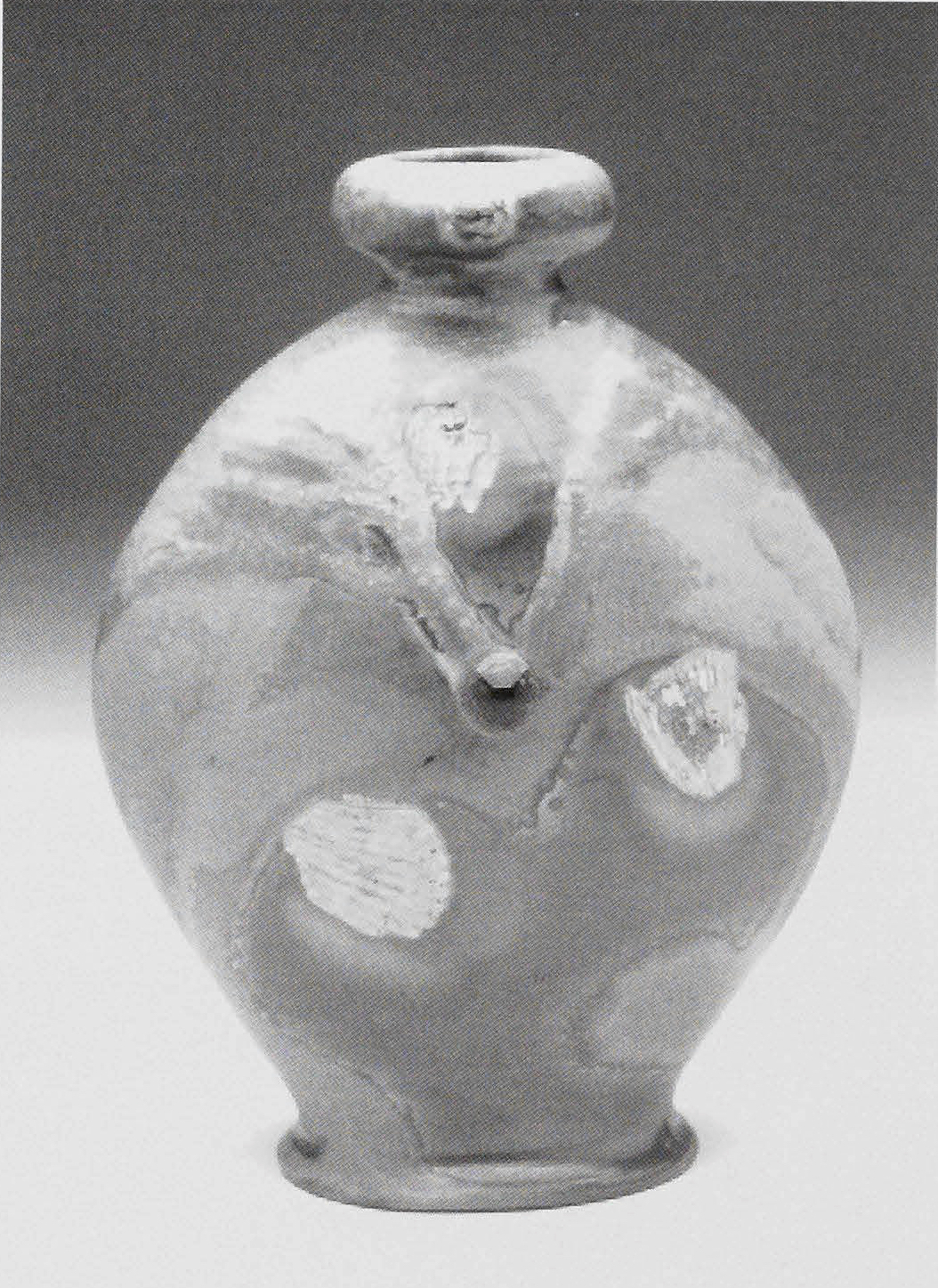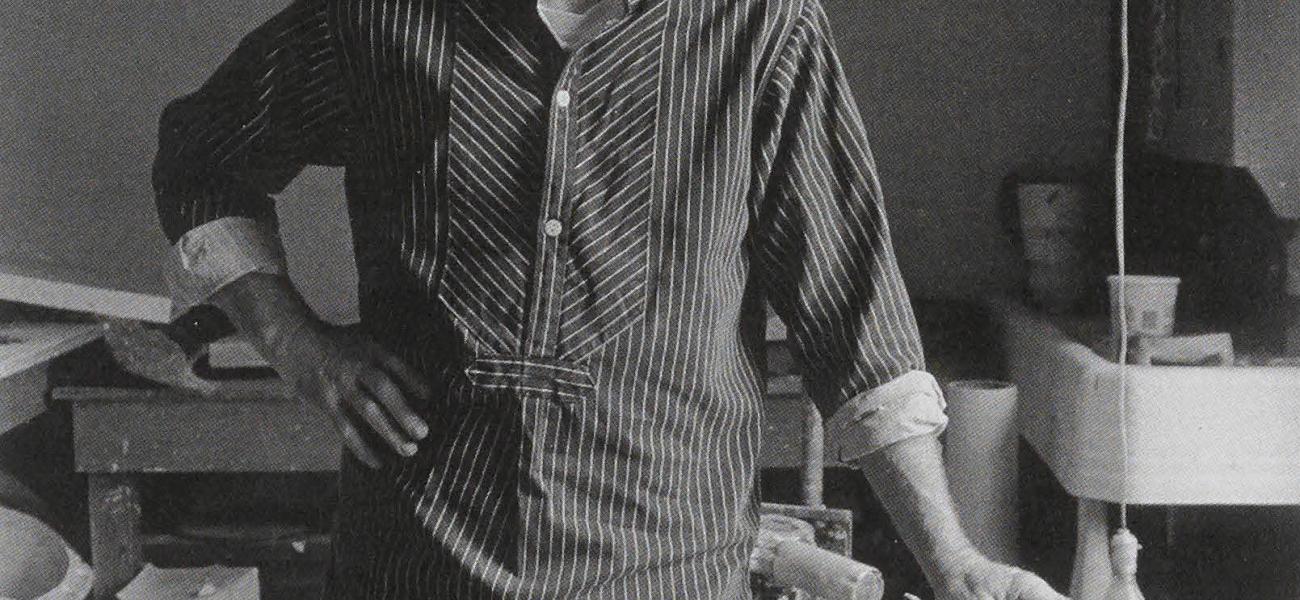Pennsylvania Passages: Part One: Jack Troy
Between 1972 and 1975 I built this house. I didn't borrow any money to build the house, I did it all with money from pottery sales. I had taken a fifty-percent cut in my teaching salary at Juniata University, so I really worked hard. We fired a hundred-and-twentyfive cubic foot kiln every Wednesday, so I was making a lot of planters and plates.
In 1977, right after my book Salt-Glazed Ceramics came out, I sat down and read my book and lost interest in salt glazing. I think it's dangerous to objectify about something you're passionate about, but that's what I did. I thought it was a good book and it would hold up, it was truthful, it was the best book I could do. But my impetus to work depended not on having a book, but just hunting and pecking, the way I type. I thought, Now what? I have skills, I know how to make stuff, but it wasn't fulfilling any more. I had lost interest. It was quite shocking. I'd always assumed I'd get up in the morning and make things. Suddenly the interest wasn't there.
One day I went to a flea market near Pottstown. I found a jug, a woodfired jug. It made me realize, when I look back on it, that there are certain people and certain pots that you can meet on a given day that can change the course of your life. It's a matter of receptivity, a matter of serendipity. Finding that pot was one of those moments. I looked at it and thought, Gee, there's something interesting here, it had fallen over in the kiln and ash had landed over it and melted and flowed.
I didn't even know where it came from. I went down to the Smithsonian and showed it to Marty Amp and Susan Meyers. Marty said, "If you like this kind of thing you ought to get in touch with Rob Barnard" (who was in Japan at the time). So Rob and I corresponded and later in 1978 he came here to Juniata, and we built a small anagama with not a great deal of success but with much potential. It fit into teaching because it gave students more to do that was personal and immediate.
It took a couple of years to learn. We didn't pay any attention to drying wood. Yet each firing had something in it that was interest ing and made you want to learn more. There were opportunities to interact with other people about this way of working. There were two symposia, one by STUDIO POTTER at the Japan Society in New York, the other at Peters Valley, and they brought people together and helped people who were working in isolation to realize that they were in a big net all tied together somehow.
For my own work, I use about six kinds of clay, which go into different zones in the kiln. When I'm mixing clay and making pots I'm merely thinking about the zones of the kiln. I make certain kinds of shapes that go in certain places. I think of my work as "fire disrupters," to let the fire decorate my work.
I've realized there is no sharp and crisp line between the aspects of my work that I am in control of and aspects I'm not in control of. There's a zone in there that I'd like to work in, and that zone is wider and more commodious with time. That comes from gaining an intuitive trust in process.
I know about the kiln and trust the people who are working with me, but there are factors I don't have any control over and some that I have quite a bit of control over. The weather and where the trees grew and when they were cut, I don't have any control over. Yet it's a guided route. I've gotten a lot smarter with time and have learned to trust.
It's so fulfilling when the trust in the process repays you in ways you never anticipate. There is always something unexpected and marvelous. I'm always hungry for that. That is both an appetite and a fulfillment. Emily Dickenson said, "Anticipate the unexpected."
Last summer's firing was great. The colors were soft and seemed to enhance the forms I make. I'm not a very imaginative potter in terms of originating crazy forms. Put in musical terms, I'm a performer of forms, and not a composer of forms. But I do like making forms suitable for certain parts of the kiln. The flame changes as you fire, and the whole is integral to what goes on. Certain shapes go in certain places. When they come out looking wonderful, you feel you wouldn't rather have been doing anything else in any part of the world. There's a kind of cosmic harmony that makes you feel you're doing the right thing with your life.
Fire is something very different from heat. Fire is a heat-delivery system, but it's different from the heat that comes from elements resisting an electric current. Fire is going to destroy what is there. Maybe all this comes down to a couple of kinds of potters: potters who protect their work from flame and potters who consort with flame and want to enlist flame in the process of firing. Flame has a life of its own, it's variable, it can be intense, or it can be very soft. There are a lot of words we associate with emotions and feelings that have to do with fire. When you look into a kiln and spend hours firing, you notice how the fire behaves.
And when you learn what that behavior is, you can work with it, establish a dialogue and get it to work for your ends without controlling it. So much of it is visual information. When we stop to verbalize it's a challenge to explain it. As you throw the wood into the kiln, there's a great surge and roiling of flame, and pretty soon the chimney begins to work on it, and the flames die down then to establish a direction and pattern that is zingo, right for the chimney. It's that constant rhythm of stoking and thinning out of the flame and the strong direction of the flame toward the chimney. When the flames begin to bump into the work, and the fire has to find its way about these pieces, it will mark a path around the pieces. A good piece can remind you where it came from, and, with its experience in documenting, what happened to it.

